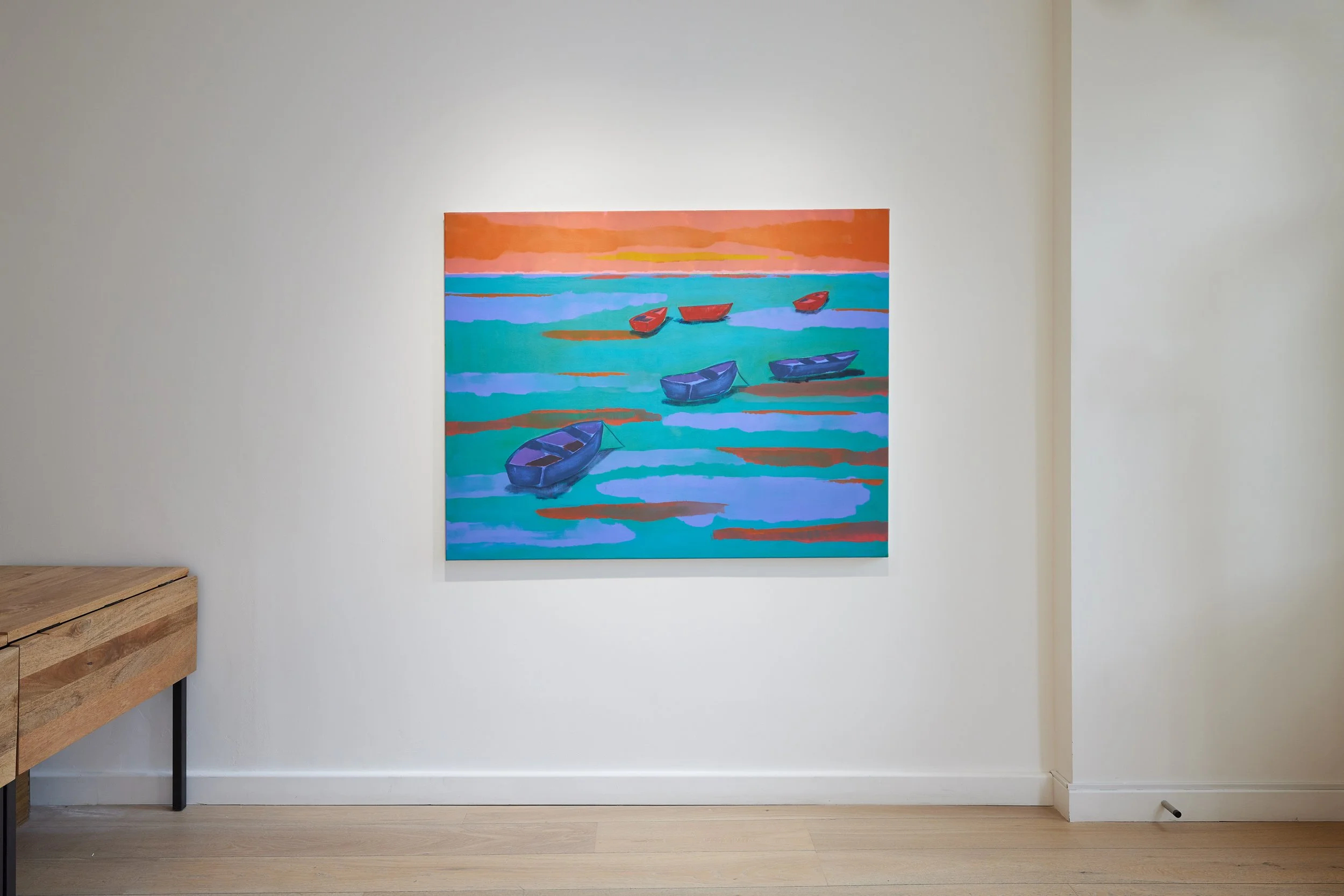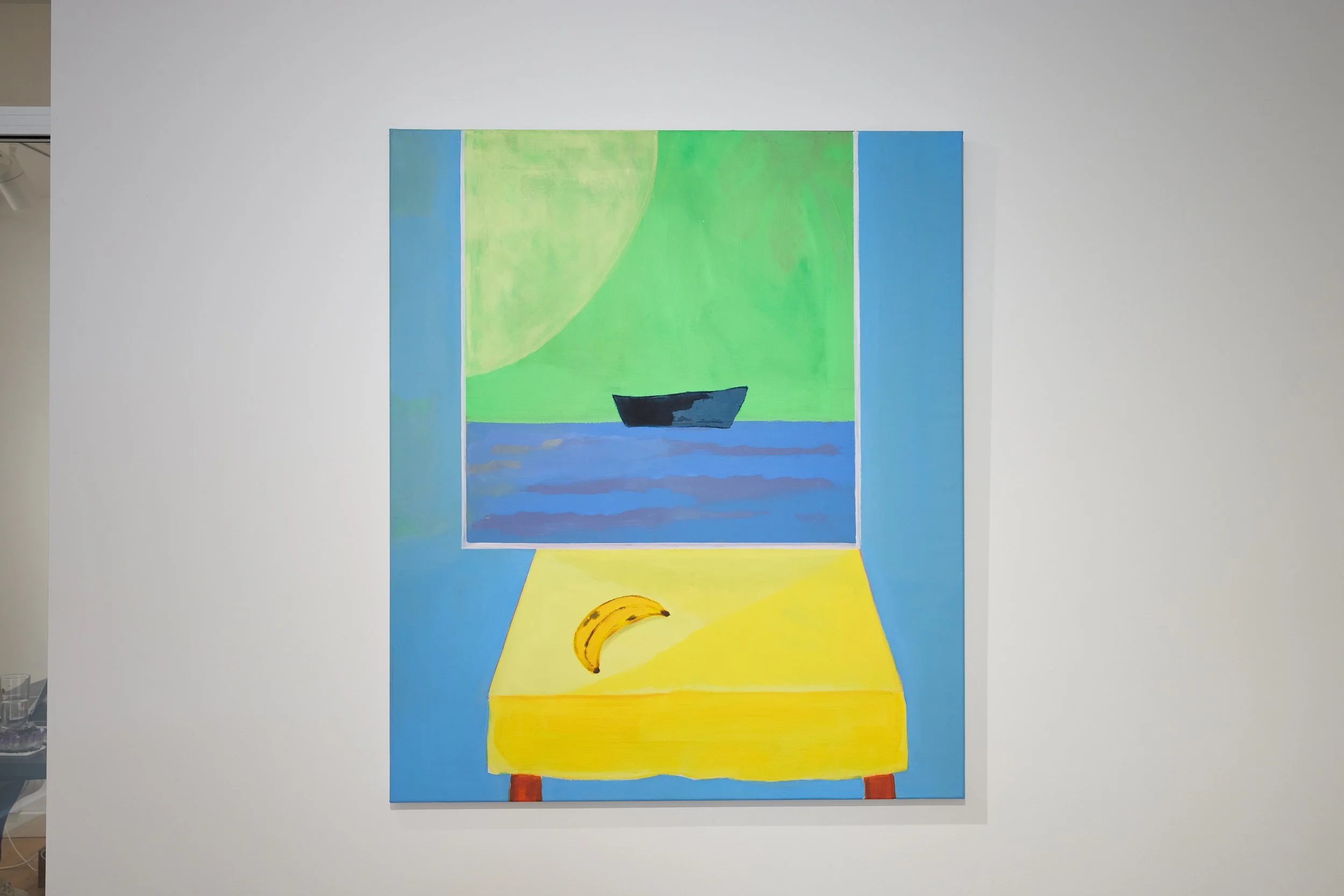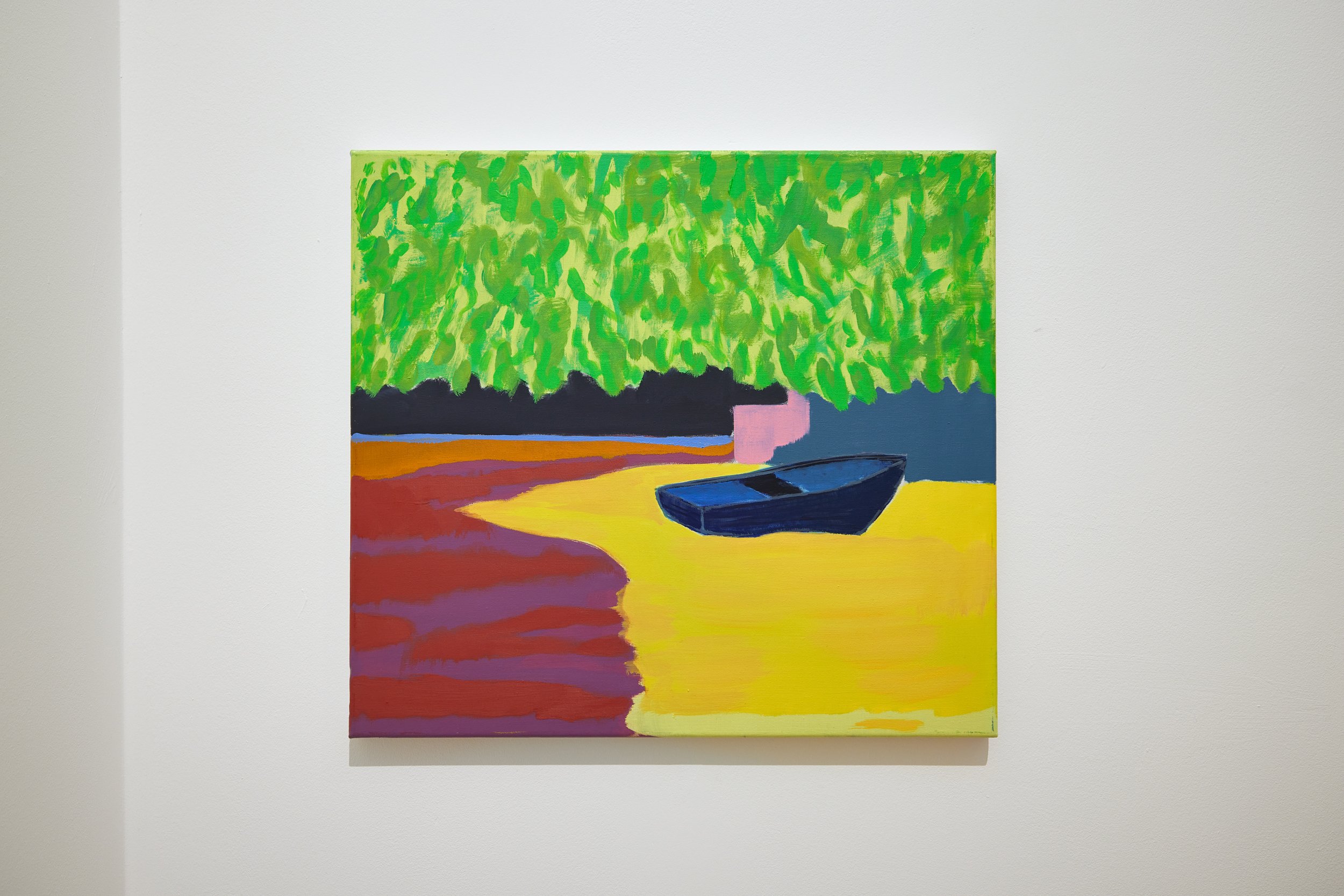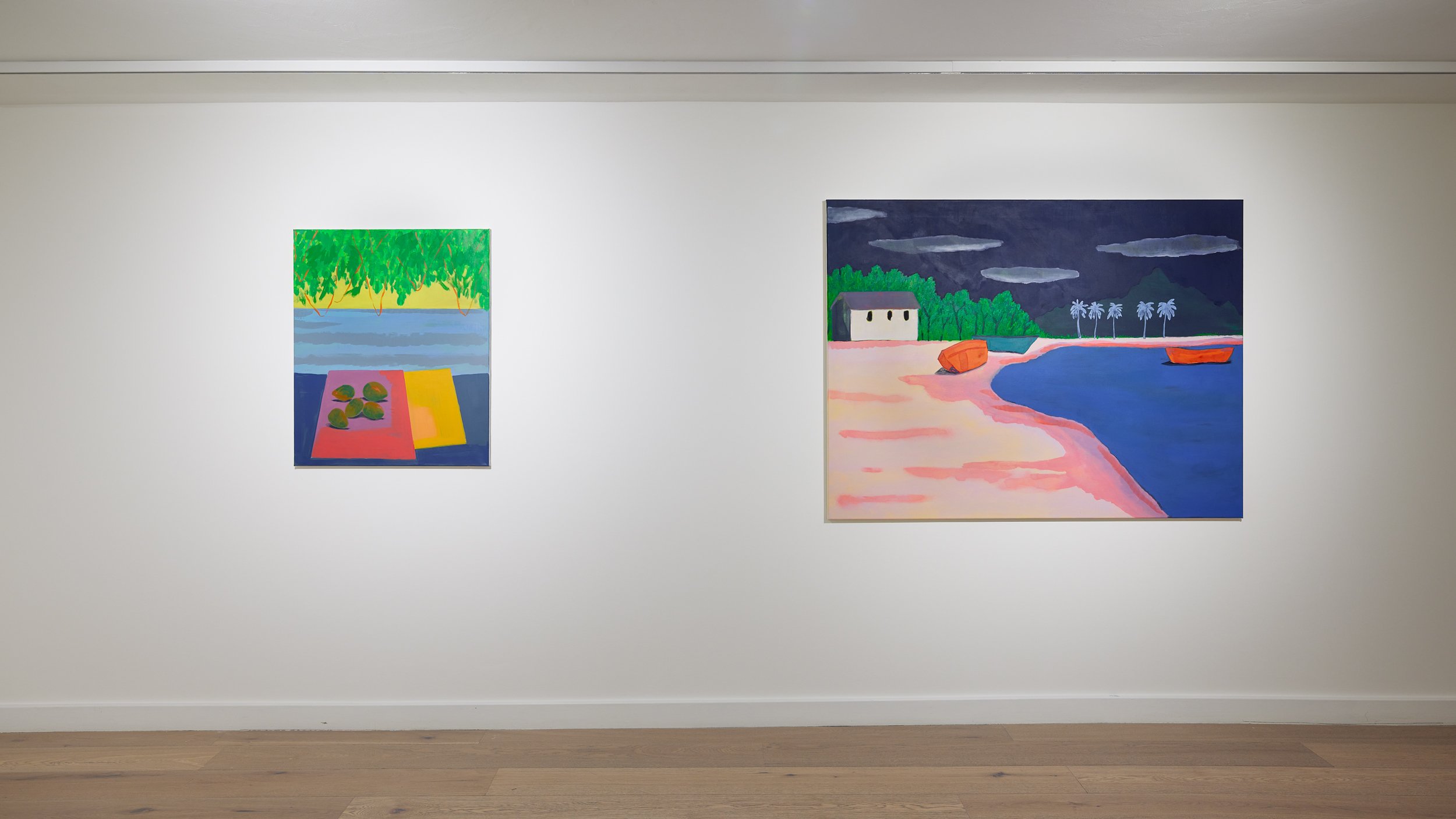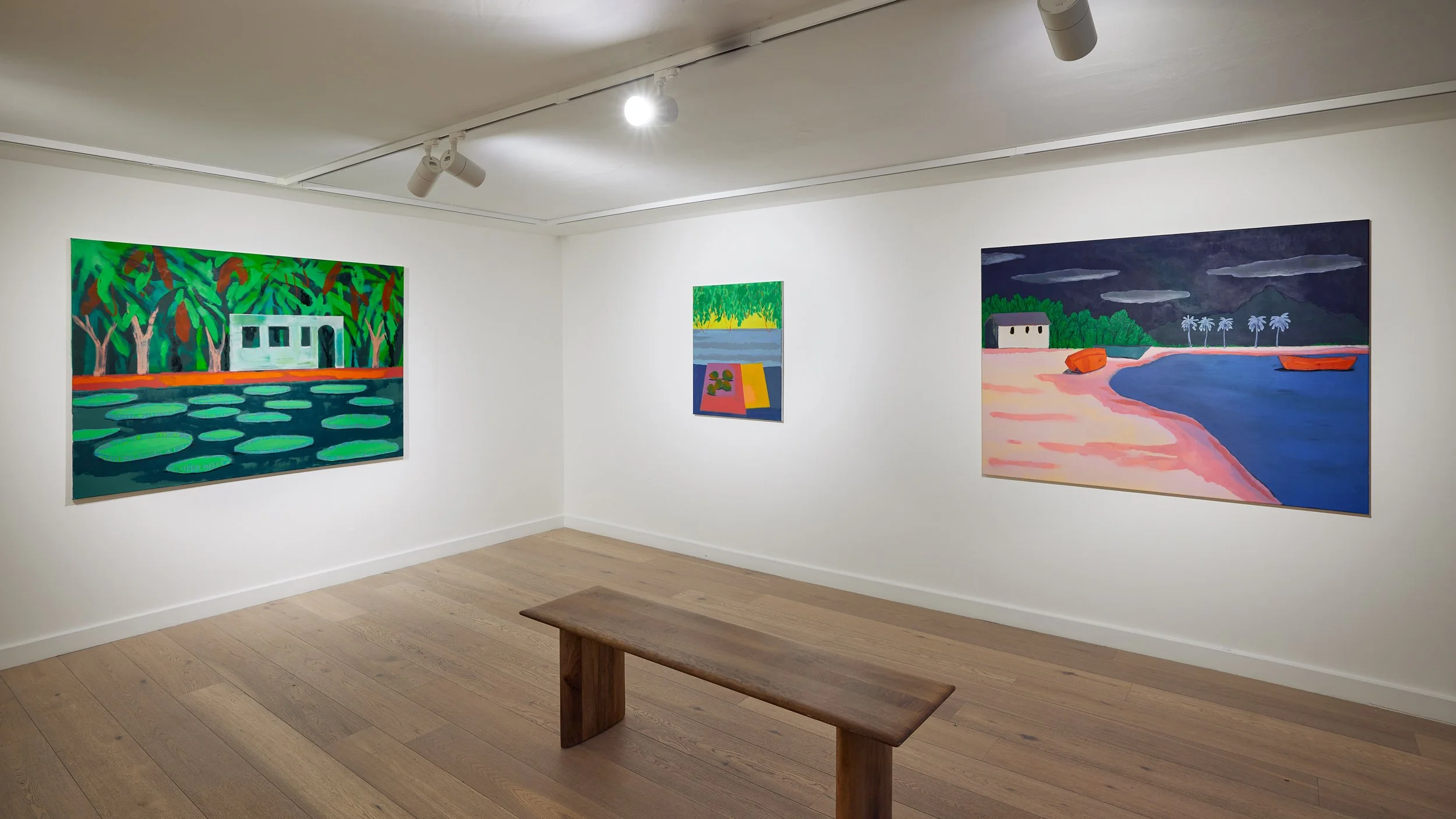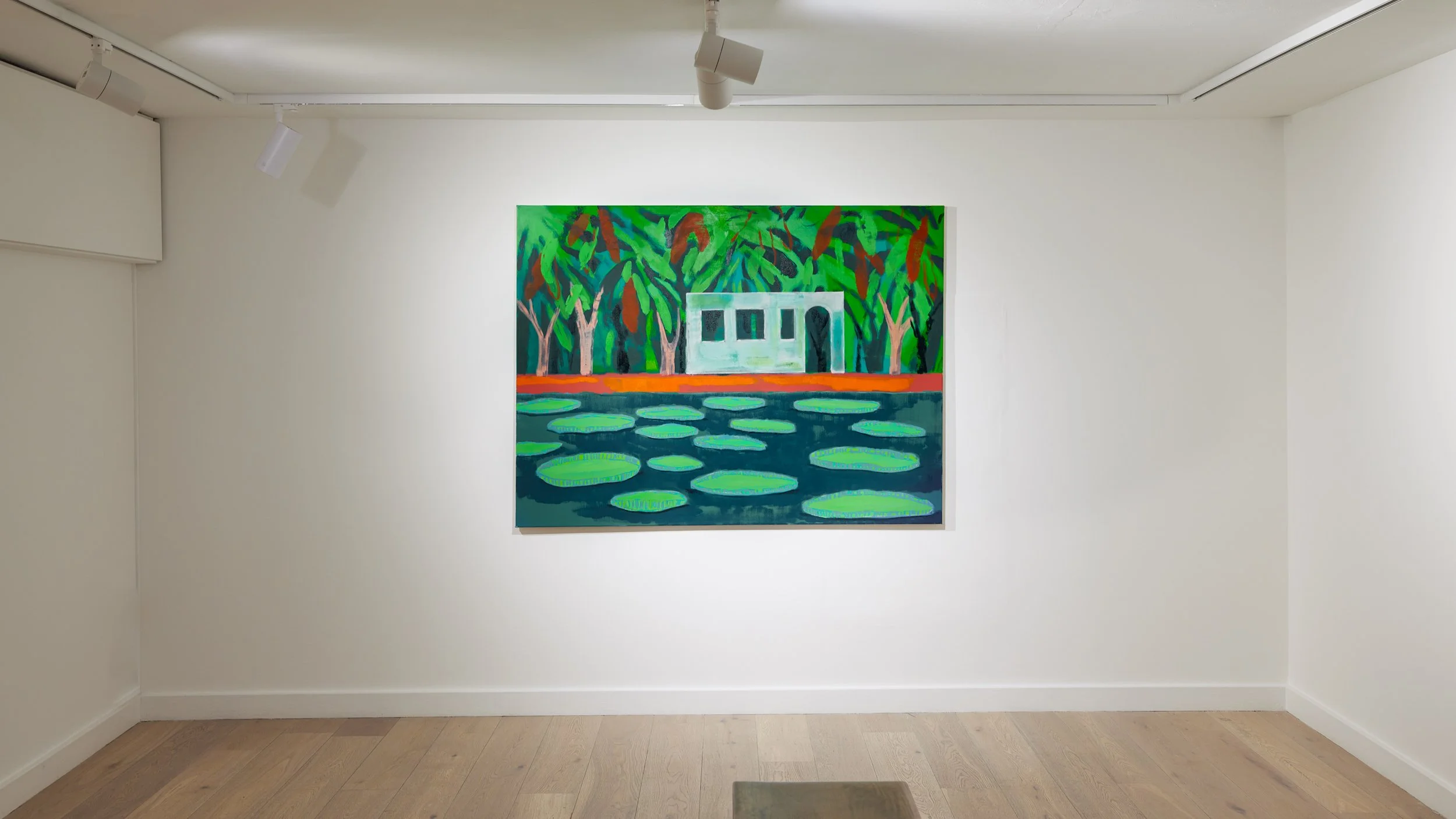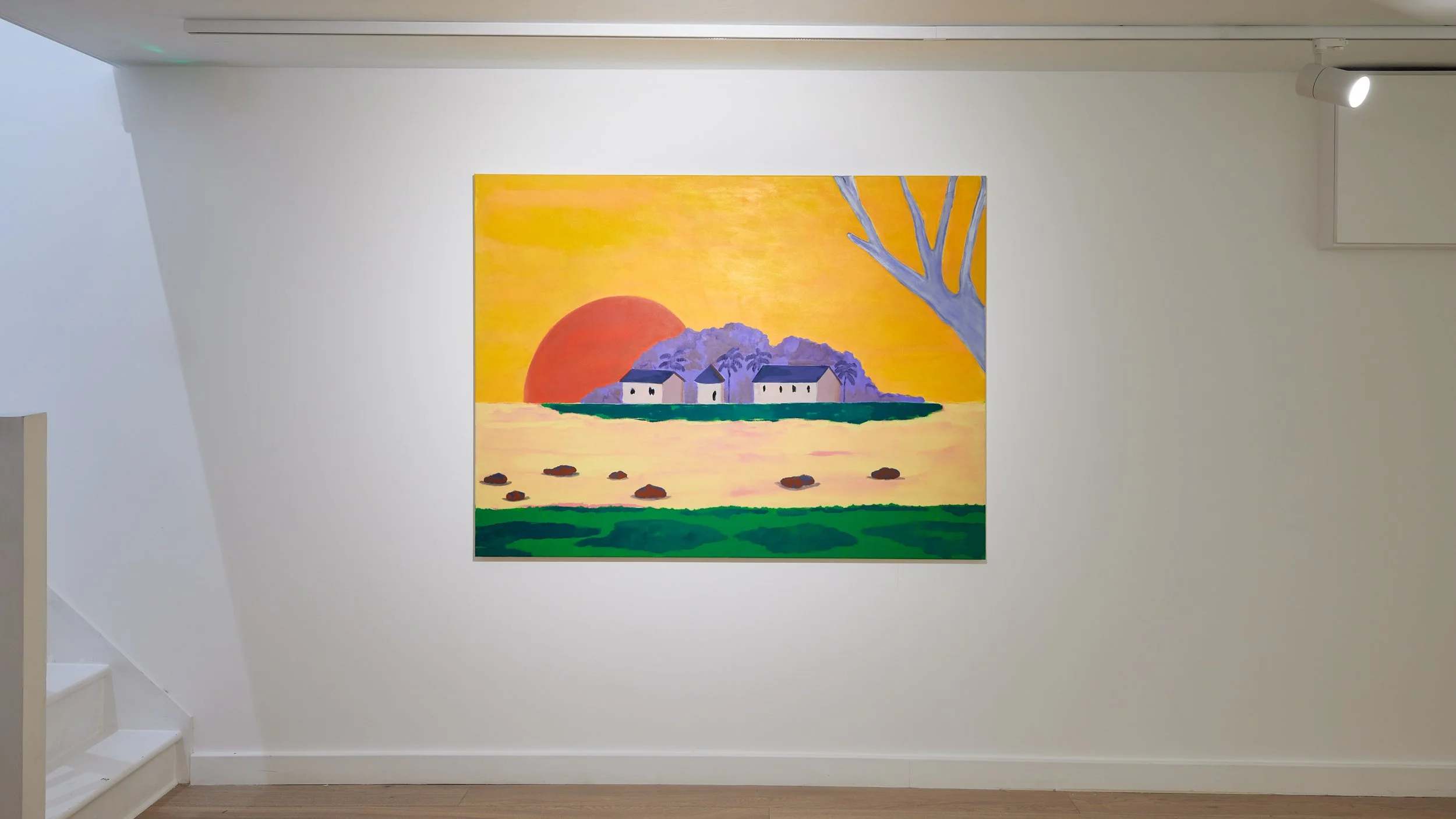Swimming Lessons
Solo exhibition at Taymour Grahne Projects, London, 10 September - 22 October 2022
Text by writer and editor Allie Biswas.
In the book (*1) that accompanies this exhibition, Cara Nahaul writes: “My childhood is flooded with memories of the sea … a body of water that sits between Malaysia and Mauritius—the islands of my parents.” Since her earliest explorations as an artist, the Indian Ocean has been vital to Nahaul, forming an integral framework for her vivid paintings of white-hued houses and lavish greenery—crisp compositions constructed from minimal components—as well as her hazier pencil-and-pastel drawings of the same verdant landscape.
Memory functions in tandem: the recollections cited by the artist relate to trips she took as a young child to her grandparents’ house in Mauritius. Although intermittent, lasting the duration of a school holiday (Nahaul was raised in St. Albans, England), the vibrant terrains she encountered, belonging to her forebears, left an indelible impression. The works in 'Swimming Lessons' evolved after the artist returned to Mauritius in 2020, following an absence of over ten years.
As an inbetween space that connects the homelands of her Chinese-Malaysian mother and Mauritian father, the seascape is a device that has allowed Nahaul to anchor her own intermediary position, as someone who is used to navigating the contradictions and joys that come with inheriting cultures from one’s parents. The physical sensation of being in the sea—a quality that undulates throughout the artist’s pictures—offers a counterpart to this notion. As she has said, “when you’re in the water, your senses are heightened and you look at the landscape, which is now far away from you, very differently.”
The scenes in Swimming Lessons are depicted from the perspective of a subject who appears to be situated within the sea itself, perhaps on a boat (Origami Castles), or who is otherwise surrounded by vast expanses of water which separate the subject from the distinct buildings that loom in the distance (Prelude to a Rainstorm). In presenting this stance of relative remoteness, the artist acknowledges the cultural and geographical dislocation of her position, while pointing to an underlying sadness that shrouds her vision, as she attempts to reconcile the memories of her youth with the present-day.
The drawings that feature in the exhibition’s eponymously titled publication are intended to provide insights into what the artist describes as the most personal aspect of her practice. Most of the paintings are arrived upon once charcoal sketches have been made by Nahaul, who will refer to photographs that she has taken. This exercise of working rapidly on paper in the first instance, as she explains, “allows me to break down the image.” Similarly, the development of each painting involves various levels of removal. “The place I’m portraying doesn’t become unrecognisable, but it’s very much my take on it,” Nahaul explains. “Through the act of remembrance, I’m turning a place into something that is mythical to some extent, anyway. And I think that’s what the painting becomes, in the end—a place that exists outside of a given timeframe.”
While precise references may be abandoned, Nahaul’s compositions are frequently grounded by the appearance of a single white house—a motif that appears throughout the Swimming Pool works. The structure replicates the home that was once occupied by the artist’s grandparents (later renovated by Nahaul’s father) an is still in existence. Depicted as a somewhat ghostly form, which embodies the unsettling ambiance that often permeates the artist’s images, the property is nonetheless as tangible as the ocean with which Nahaul yearns to reconnect.
(*1) Book: The artist is also launching a monograph, produced in collaboration with Cactus Moon Studio.
(Photography courtesy of Taymour Grahne Projects)
